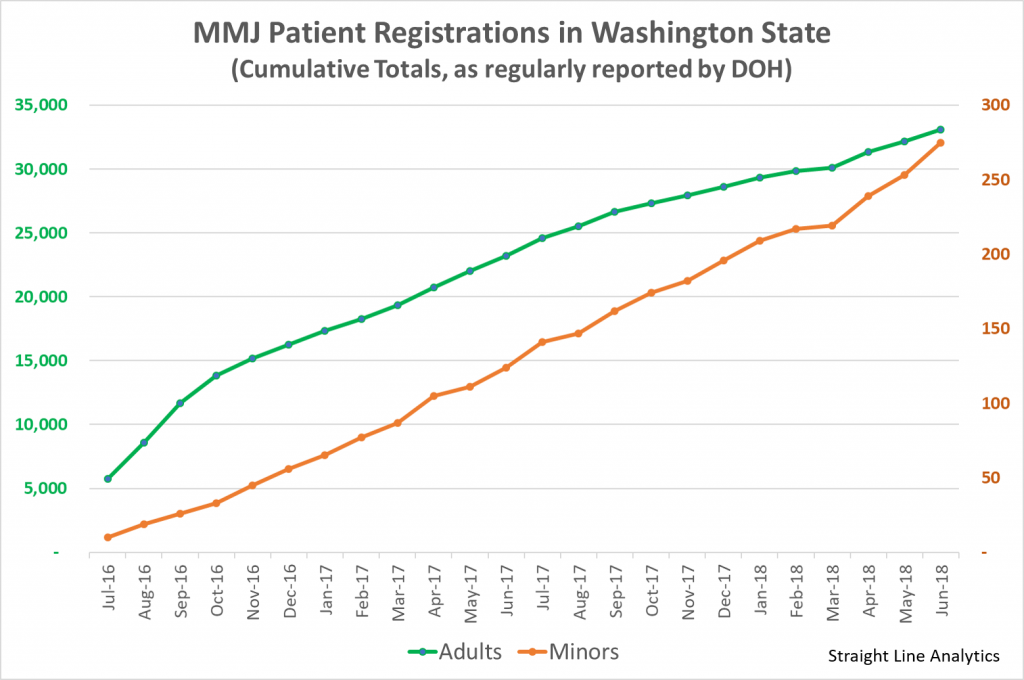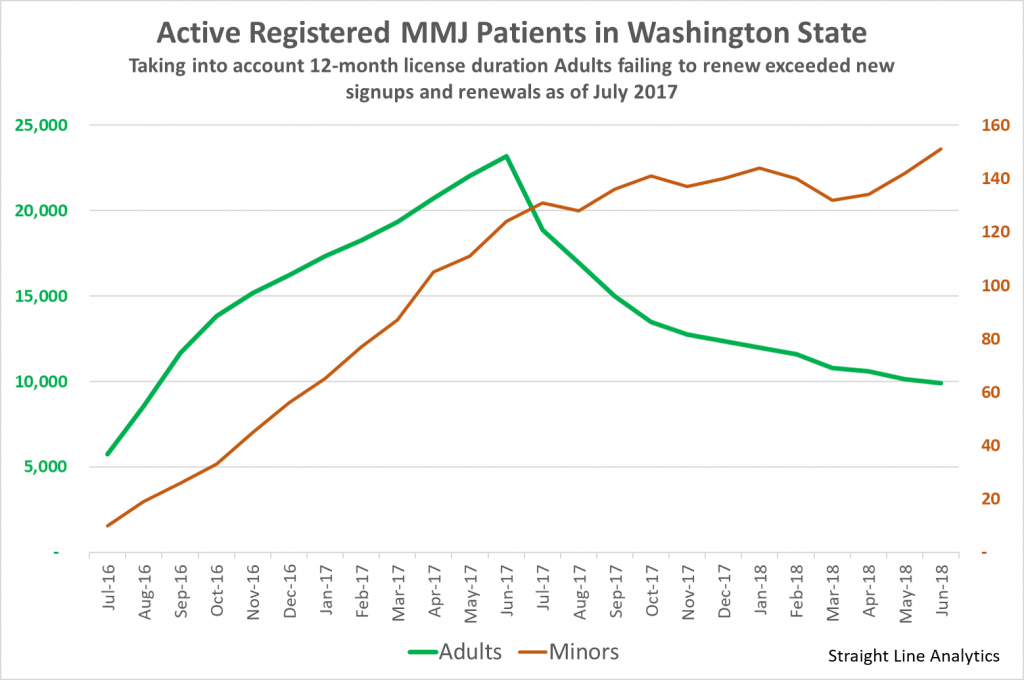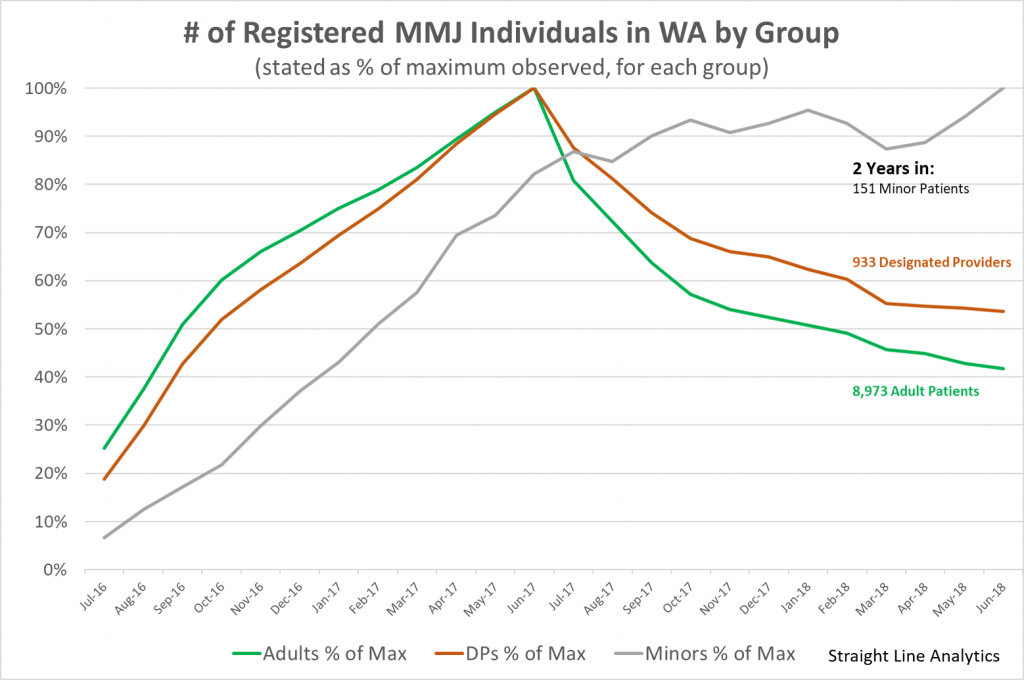The lack of utility and value in Washington’s medical cannabis market, as it is now regulated, is palpable.
Inadequate access to appropriate and affordable products, to certified medical access points, and to product knowledge communicated in useful ways have all compromised the value proposition of the system.
The lack of meaningful oversight of reported product potency and QA results has contributed to a well-deserved general mistrust in the labelling, purity and safety of regulated products.
Given how inadequate things are today in Washington’s regulated medical system, the following post should be viewed from the perspective that things almost definitely will get better over time. There is so much room for improvement that they just have to.
Two years ago yesterday, WA forced all medical marijuana producers, providers, and Patients to make a hard choice. They were required to either:
- play by the new Dept. of Health (DOH) / Liquor and Cannabis Board (LCB) / Dept. of Revenue (DOR) rules
- remove medical marijuana from their medicinal cabinets and/or business models
- leave Washington
- or become criminals.
Leading up to the regulation of medical marijuana, estimates placed the number of active Patients in Washington at anywhere between about 150,000 and 250,000 (representing between 2.0% and 3.0% of state population).
Original plans for the registration database suggest that the DOH determined that “good” performance for the regulated system would be reflected in the registration of 75,000 Patients in the first year, having about 73,000 Patients active in the registry by the end of the second year, and having about 77,500 Patients active in the registry by the end of the third year.
The assumption seemed to be that, given the hurdles associated with having one’s name stored in a database of registered people while the product in question remained Federally illegal, a successful system would be able to entice somewhere between one-third and one-half of Washington’s active medical marijuana Patients to enter their names, pictures, addresses, and medical conditions into a Government-controlled electronic registry. This, in exchange for the many benefits of being so registered.
As of June 29, 2018, the DOH asserts that they have processed 33,384 registration cards for Patients or their designated providers. Most of these were for adult Patients (30,348), a few were for designated providers that are generally involved in the care of either a child or an adult with difficulty sourcing meds themselves (2,671), and a small number were for minor patients aged below 18 (275).
Taken at face value, this represents about 43% of what the DOH had originally envisioned that success would look like two years into the regulation of MMJ.
As I mentioned in an earlier HI-Blog post, Patient registration cards last only 12 months and card-holders are required to re-register annually in order to keep their patient registrations active. The DOH numbers include renewals in the cumulative totals they report. That means that, starting in July of 2017, the numbers reported by DOH have systematically over-stated the number of current actively registered Patients in the state.
Taking into account the 12-month life of registrations, the actual number of currently active patient registry records can be estimated to be 10,057. (note that one does this by simply subtracting all registry entries made through June of 2017 from the number of total registry cards processed through June of 2018)*.
Doing this, the estimated number of currently active Patients (and designated Providers) represents only 4-6% of the medical marijuana Patients thought to have existed in Washington before the Government decided to apply regulation and order onto Washington’s well-established medical marijuana ecosystem.
Based on this I have to conclude that the implementation of the Patient Protection Act (SSB-5052) has, largely, been a failure in that it does not appear to be meeting the needs of the vast majority of Washington Patients desiring to use cannabis-derived products as part of their health regime.
Two facts make clear that the current regulated medical marijuana system is not even coming close to meeting the needs of Patients in Washington State:
- one year into being regulated, only 10% of estimated active Patients had taken the step of entering the Patient registry maintained by the DOH
- during the subsequent 12 months, well over 50% of those have allowed their registrations to lapse.
By way of external reference, Washington’s current numbers represent per-capita registration rates only about one tenth of the levels seen in Colorado and Oregon earlier this year.
The following three charts show the reported and actual dynamic regarding how many Patients (and designated providers) have ever signed up and how many are currently signed up in the state-controlled registry.
The first two charts show reported cumulative and estimated counts of active authorized registry entries. The third highlights the different pattern seen in minor Patients compared to adult Patients.
The number of active, registered Patients below the age of 18 has consistently increased over time. This means that kids, once entered in the Patient registry, are not “falling of the books” to the same degree as are adults. While small, this group of children seems to be finding value in the regulated system. The DOH would benefit from trying to learn from these individuals and from their care-givers.
Something about Washington’s system of defining medical marijuana and defining medical marijuana Patients and recording and tracking medical marijuana and the Patients depending on it’s medical benefits is, clearly, broken.
A note to regulators: The registry itself is part of the problem. The relative benefits of being registered are another part of the problem. The rules that limit those benefits are clear and, possibly with some Legislative support, are fixable. The risks foisted on Patients, suppliers, and providers when they choose to participate in the regulated system are a part of the problem. The apparent belief by key regulators that marijuana is not, actually, medicinal may also be part of the problem.
Look for a series of posts on HI-Blog over the next few weeks that will dive into specific suggestions for areas in which WA’s medical system can be easily and significantly improved. Improved, that is, for the Patients and for those that would provide for them.
Footnote:
*According to the Dept. of Health, as of last Friday (June 29, 2018), there were 15,136 registered Patients (and Providers) in the Medical Marijuana Authorization System. I’d like to thank the DOH staff that have been working on producing data relating to the registry and other aspects of patient, product, and infrastructure-related information relating to the medical marijuana market in Washington. Many of their reporting efforts have been hampered and, no doubt, frustrated, by the inability of the contracted developer to deliver most of the reporting capabilities originally specified for the Medical Marijuana Authorization System. Given that, the DOH released their estimates to me with more than the usual amount of risk. I appreciate that outreach on their part.
I do not yet understand why the new DOH “currently active Patient” numbers are 50% larger than what I estimated using arithmetic and logic. I may have missed an important dynamic in the market, for example.
If the new DOH numbers are correct, all of the points made in this post still hold true, other than that the results regarding Patient engagement after 2 years of regulation would fall at 21% of the originally targeted goal, rather than at the 14% suggested by my estimates.
Both scores would, by most standards, be considered failing grades.
When a system fails Patients, that system fails Patient health and, by extension, both public health and well-being.


